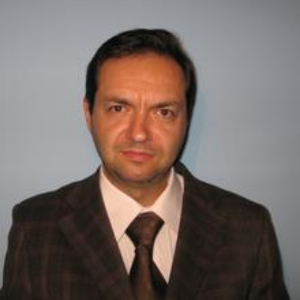Title : Systemic Models: From the Neuromuscular Junction to the Upper Levels of the Nevrax
Abstract:
To make possible a systemic methodology for the treatment of the neuromuscular pathology, some models must be developed to predict what stimulus can optimal interfere with the system function in order to modify its state. Stripped muscles are part of somatic system - the interaction system of human body with the environment. Their rigorous control is one of the main nervous system objective. This paper presents few models of the process control for the different levels of interfaces between the human nervous system and locomotion system. A systemic approach of the nervous system, at the control engineering level and the integration of the means of treatment and investigation as scheme control block permits an integrative approach of treatment or rehabilitation processes. The proposed models associate some electronic functions to different biological parts, benefiting on the system theory for the human body. From cellular level, the neuron is behaving like a comparator with signal integration on inputs. Depending on the membrane specific capacity Cm and equivalent conductance Gm, the input current density is processed accordingly to the switch time between the steady state potential and action potential transitions - excellent modeled by electronic comparators. It must be taking into account that the spatial and temporal summation of the stimulus, each one being either an excitation or inhibition, is coming up from multiple synapses, in a short period of time. Then, step by step, more portions of neuronal membrane are associated with systemic blocks that depict an entire cell. The next step is to model the sensitive neurons. They work like voltage controlled oscillators, because every sensation is converted in a voltage level on the input resulting a voltage pulses train at the output. On the other hand, according with the recent work in the domain of cellular and molecular neurobiology, based on Henman principle, a neuronal pole consists in all the motor neurons provided for the command of a single muscle. The recruitment order in the situation of a command that arrives from the upper level of nevrax, occurs after their order of magnitude: the motor units with slow fibers first, then the motor units with medium fibers and the motor units with fast fibers at last. Finally, three control loops for the upper levels of the nevrax were identified and modeled by a Process - Controller continuous loop.
What will audience learn from your presentation?
- The audience will be able to apply these models in order to develop useful tools in neuromuscular diseases.
- People working in the field of medical recovery in locomotors system can use these models based on systemic approach, able to depict the body reactions to external stimulus, like reflexology.
- This research work can be extended to other faculties in the bioengineering field, to expand their research or teaching area from neuro-locomotion system to a systemic approach.




